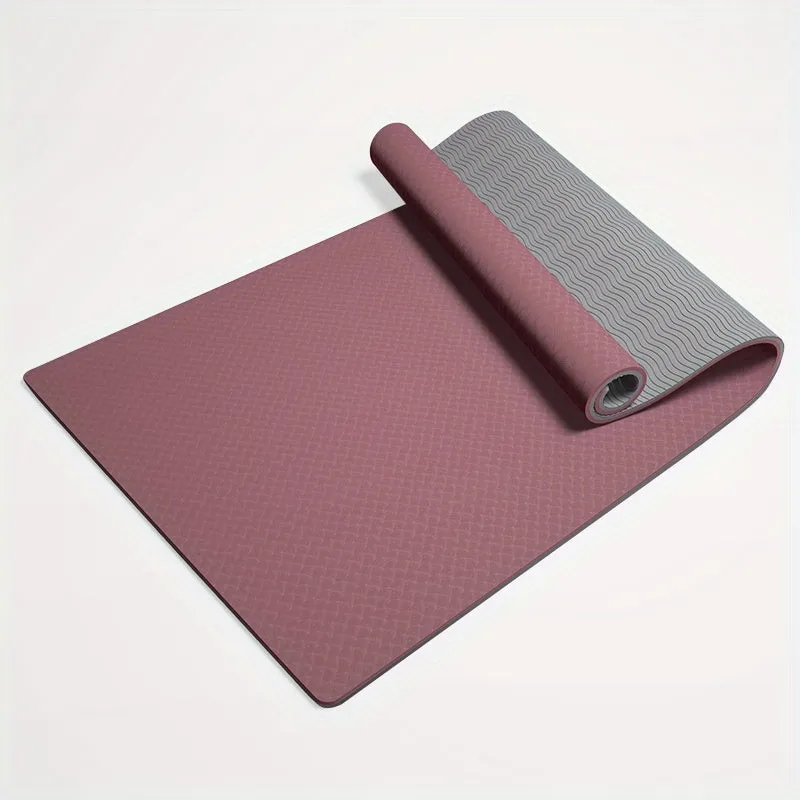50% Off Yoga Accessories Shop Now→

Easy Maintenance: Many quality mats are designed to be easy to clean, allowing you to maintain freshness and hygiene with minimal effort. Regular cleaning helps extend the life of the mat and keeps it looking new.
Cost-Effectiveness: While a quality yoga mat may come at a higher initial cost, its durability means that you won’t have to replace it frequently. This long-term investment can save you money over time compared to cheaper mats that wear out quickly.
Choosing the Right Yoga Mat for Your Needs
Consider Your Practice Style
Yoga Type: Different forms of yoga may require specific mat features. For instance, if you practice hot yoga, a mat with excellent moisture-wicking properties is essential. For restorative yoga, a thicker mat may provide the comfort you need.
Fitness Goals: Consider what you aim to achieve with your workouts. If your focus is on strength training or Pilates, you may prefer a mat that offers more cushioning and support, while those centered on balance and flexibility may prioritize grip and stability.
Evaluate Material and Thickness
Material Composition: Common materials include PVC, TPE, and natural rubber. TPE (Thermoplastic Elastomer) is often favored for its eco-friendliness and non-toxic properties, while natural rubber mats provide excellent grip and cushioning.
Thickness Options: Mats typically range from 1/16 inch to 1/4 inch in thickness. A thicker mat can provide more cushioning for your joints, while a thinner mat may be better for stability and balance. Choose based on your comfort and the type of exercises you plan to perform.
Assess Size and Portability
Mat Size: Standard yoga mats are usually 68 inches long, but taller individuals may prefer longer mats. Ensure that the mat you choose provides enough space for your body, especially during poses that require more room.
Portability: If you plan to take your mat to classes or travel, consider a lightweight and easily foldable option. Some mats come with carrying straps or bags for added convenience.
Tips for Maintaining Your Yoga Mat
Regular Cleaning
Wipe After Use: To maintain hygiene, wipe down your mat after each use with a gentle cleaner or a mixture of water and vinegar. This helps prevent the buildup of sweat and bacteria.
Deep Cleaning: Occasionally, give your mat a thorough clean by rinsing it with water and mild soap. Ensure it dries completely before rolling it up for storage.
Proper Storage
Avoid Sunlight: Store your mat in a cool, dry place away from direct sunlight, which can degrade the material over time.
Roll Instead of Fold: When storing your mat, roll it up rather than folding it to prevent creases and maintain its shape.
Monitor for Wear and Tear
Check for Damage: Regularly inspect your mat for signs of wear, such as cracks, peeling, or loss of grip. If you notice significant damage, it may be time to replace it to ensure safety during workouts.
Replace When Necessary: Don’t hesitate to invest in a new mat when your current one no longer provides the support and stability you need. Your safety and comfort should always come first.
Conclusion
A high-quality yoga mat is an essential investment for anyone looking to enhance their fitness journey. With benefits ranging from improved stability and support to enhanced performance and durability, the right mat can transform your workout experience. By considering your practice style, evaluating materials, and maintaining your mat properly, you can create a dedicated space for mindfulness and movement that supports your overall well-being.
Whether you’re practicing yoga, Pilates, or engaging in other fitness activities, a quality yoga mat will provide the foundation for your journey towards health and wellness. Embrace the benefits of a well-chosen mat and elevate your workouts to a new level of comfort and effectiveness.